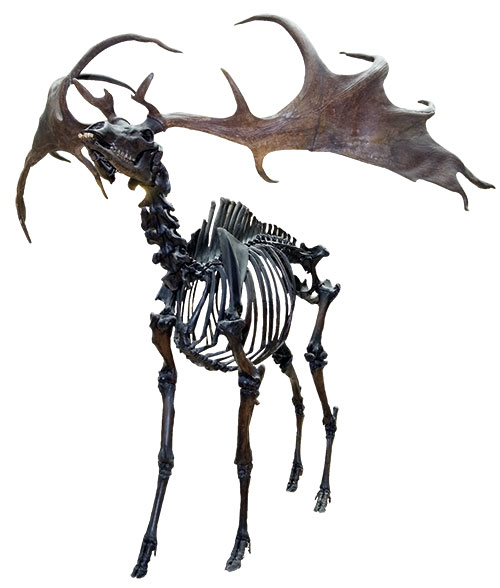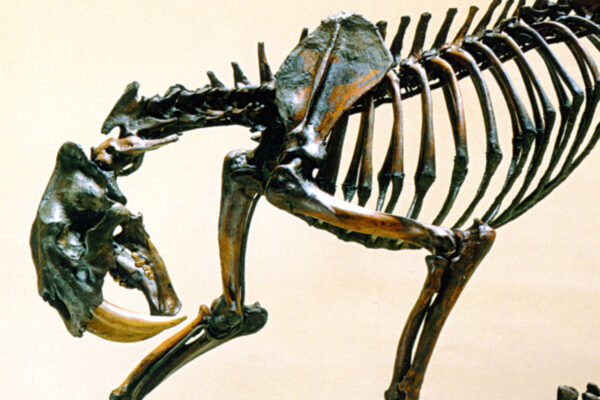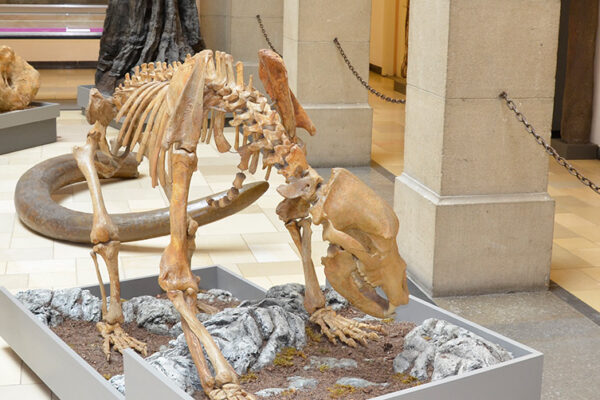Giant Deer
Megaloceros giganteus

Quaternary: Pleistocene: Late Pleistocene; approx. 13.000 years old
Peat bog in Dunshauglin, Leinster, Ireland
The giant deer got its name from the male’s antlers, which could have a span of up to 3.60 m, a record among all known antlers, be that fossil or present-day. The species lived south of the mammoth steppe in boreal forest lands of Eurasia until the end of the Ice Age about 11,700 years ago; only in Siberia did a population of giant deer survive until 7,600 years ago.
SNSB-BSPG 1956 I 494
Original






